How to delay the Windows 10 May 2019 Update without losing quality updates
The May 2019 Update for Windows 10 is rolling out now, but if you're not ready for it, this guide details three ways to delay it as long as possible.
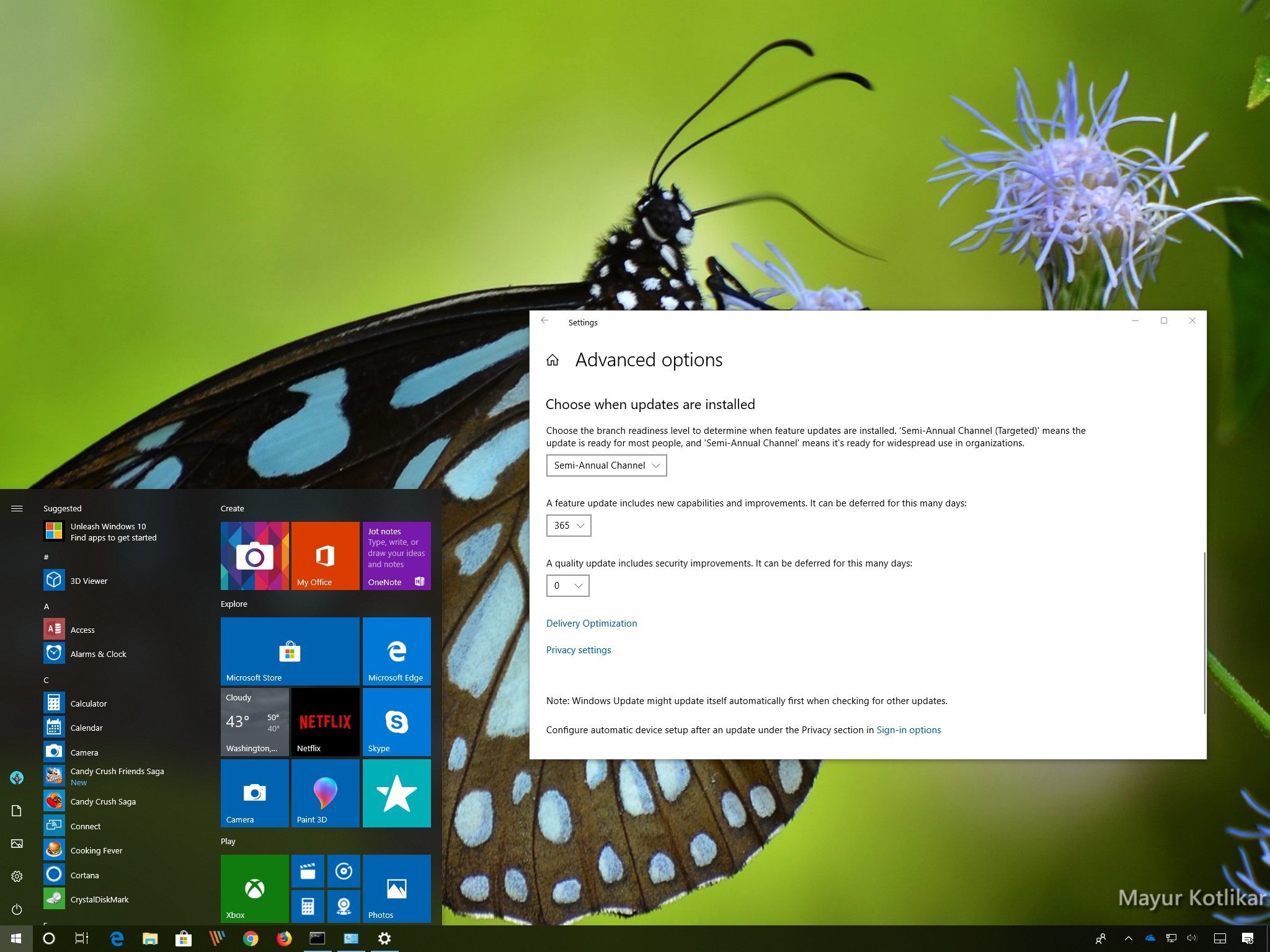
As part of the Windows as a Service (WaaS) update model, Microsoft is now rolling out the Windows 10 May 2019 Update (version 1903), which means compatible devices around the world will soon start receiving new features and improvements.
Similar to previous versions, the update will roll out gradually, but it'll no longer download and install automatically. Starting with version 1903, compatible devices will now receive a notification, and the installation won't start until the user initiates the process manually through Windows Update. However, if the device is running an older version close to the end of service, Windows 10 will try to force the feature update automatically to keep the computer supported.
Although the feature update should install without issues, if you'd rather wait until the new version is rock-solid, or you're happy with your installation, even though it may be getting close to its end of service, you can delay the Windows 10 May 2019 Update in at least three ways without losing maintenance updates.
Related: The difference between 'feature updates' and 'quality updates'
In this Windows 10 guide, we walk you through the different ways that you can delay the May 2019 Update on your device, whether it's running Windows 10 Pro or Windows 10 Home, without missing essential quality updates.
- How to delay the Windows 10 May 2019 Update
- How to defer the Windows 10 May 2019 Update
- How to block the Windows 10 May 2019 Update
How to delay the Windows 10 May 2019 Update
If you clicked the Download and install now button on the Windows Update page, but you can't proceed as soon as it's ready because you're using the device, you can postpone the installation to a different time or day with the Settings app.
Postponing feature update installation
If the feature update is ready to install, but you wish not to proceed immediately, you can postpone the installation of the May 2019 Update for about a week, using these steps:
Get the Windows Central Newsletter
All the latest news, reviews, and guides for Windows and Xbox diehards.
- Open Settings.
- Click on Update & Security.
- Click on Windows Update.
- Click the Schedule the restart link.
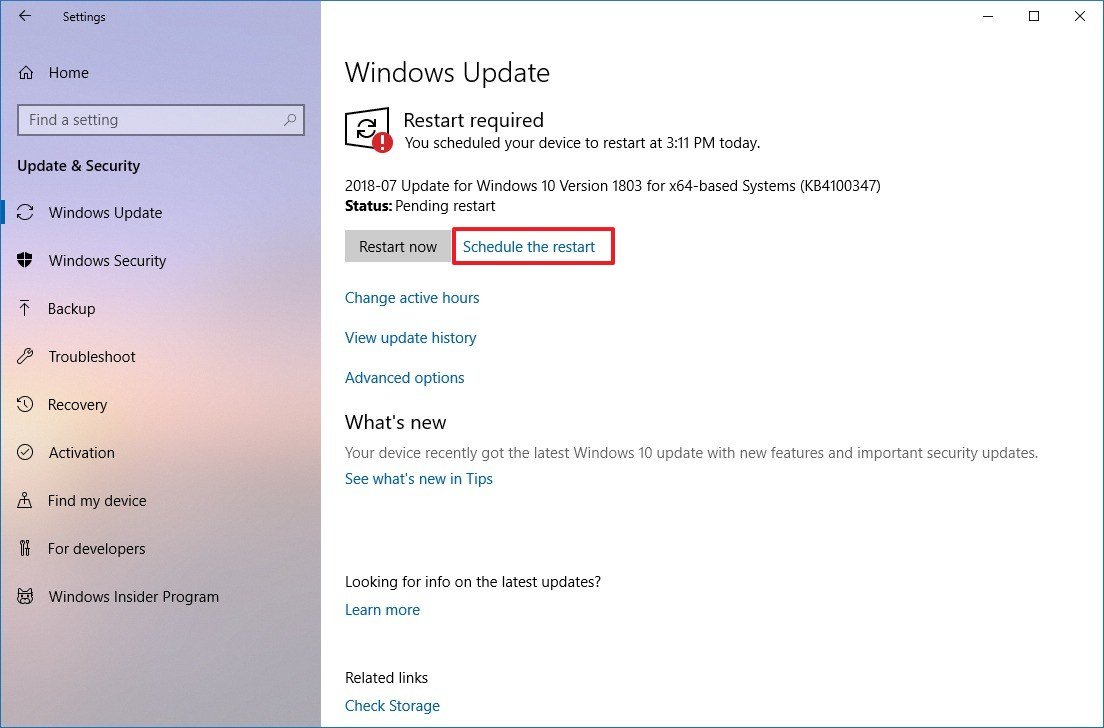
- Under the "Schedule a time" section, turn on the toggle switch.
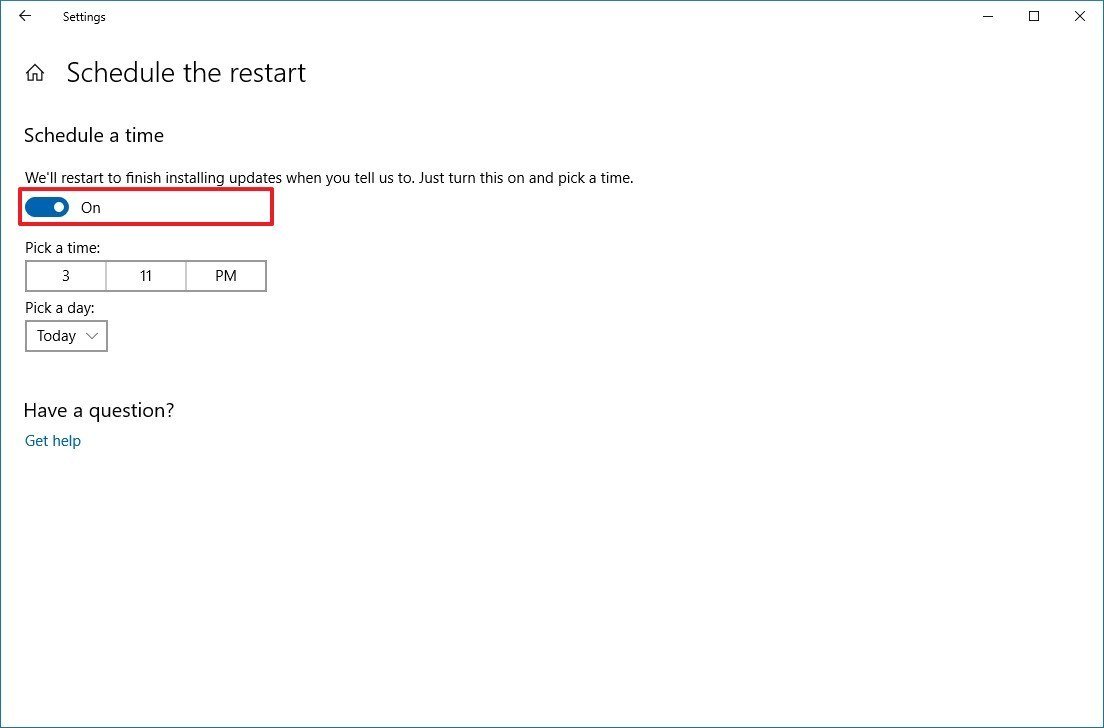
- Select the time and day the device will restart automatically to finish the installation (up to seven days in the future).
After you complete these steps, the device will not restart automatically to change your current setup until the schedule you specified.
If you're planning to upgrade to version 1903 later the same day, but you want to avoid going through the process while you need to work on the device, you can configure your active hours to upgrade on a later time.
Pausing feature update downloads
To delay the download and installation of a new version of Windows 10 for several days on a device close to the end of service, use these steps:
- Open Settings.
- Click on Update & Security.
- Click on Windows Update.
- Click the Advanced options link.
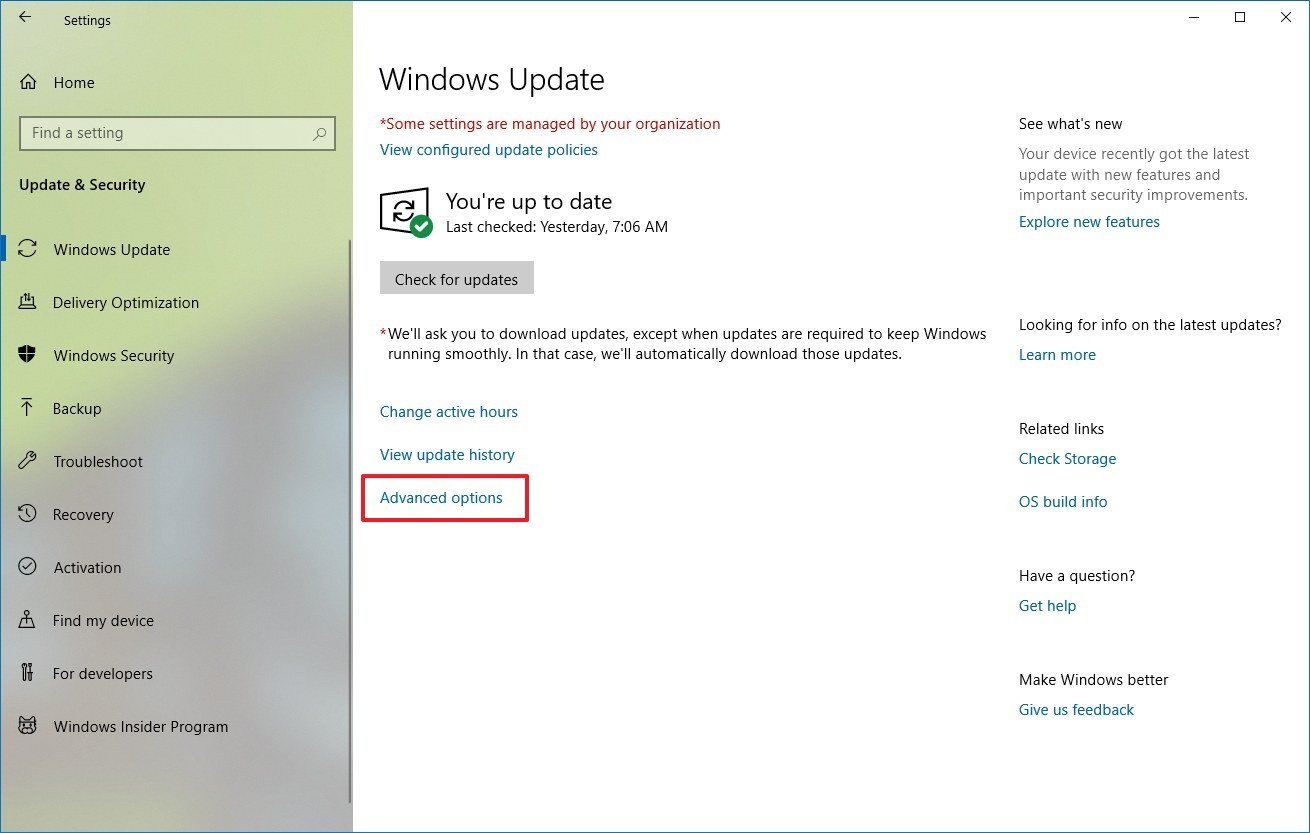
- Under the "Pause Updates" section, turn on the toggle switch.
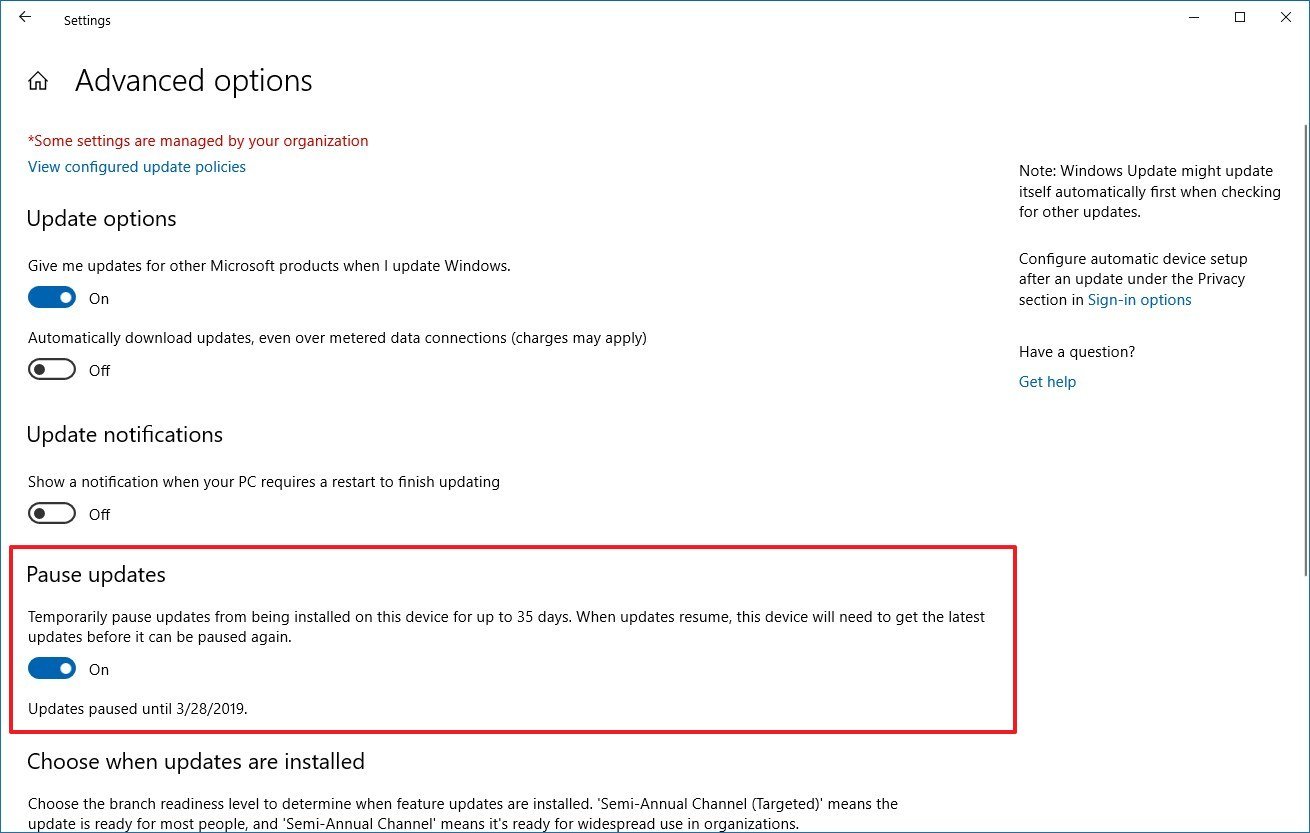
Once you complete the steps, your computer will not receive feature or quality updates through Windows Update for up to 35 days (depending on your available settings).
How to defer the Windows 10 May 2019 Update
If you're not ready to commit to the new version, and you're using Windows 10 Pro, the Settings app offers an advanced option to defer feature updates for up to 18 months since the original release.
To defer the May 2019 Update until you're ready, use these steps:
- Open Settings.
- Click on Update & Security.
- Click on Windows Update.
- Click the Advanced options link.

- Under the "Choose when updates are installed" section, select the level that you want to use to block the May 2019 Update:
- Semi-Annual Channel (Targeted) — Defers version 1903 up to 365 days after its original release date.
- Semi-Annual Channel — Defers version 1903 up to 365 days after it releases to organizations. Usually, it takes four months after a new feature update becomes available in the Semi-Annual Channel (Targeted) readiness level.
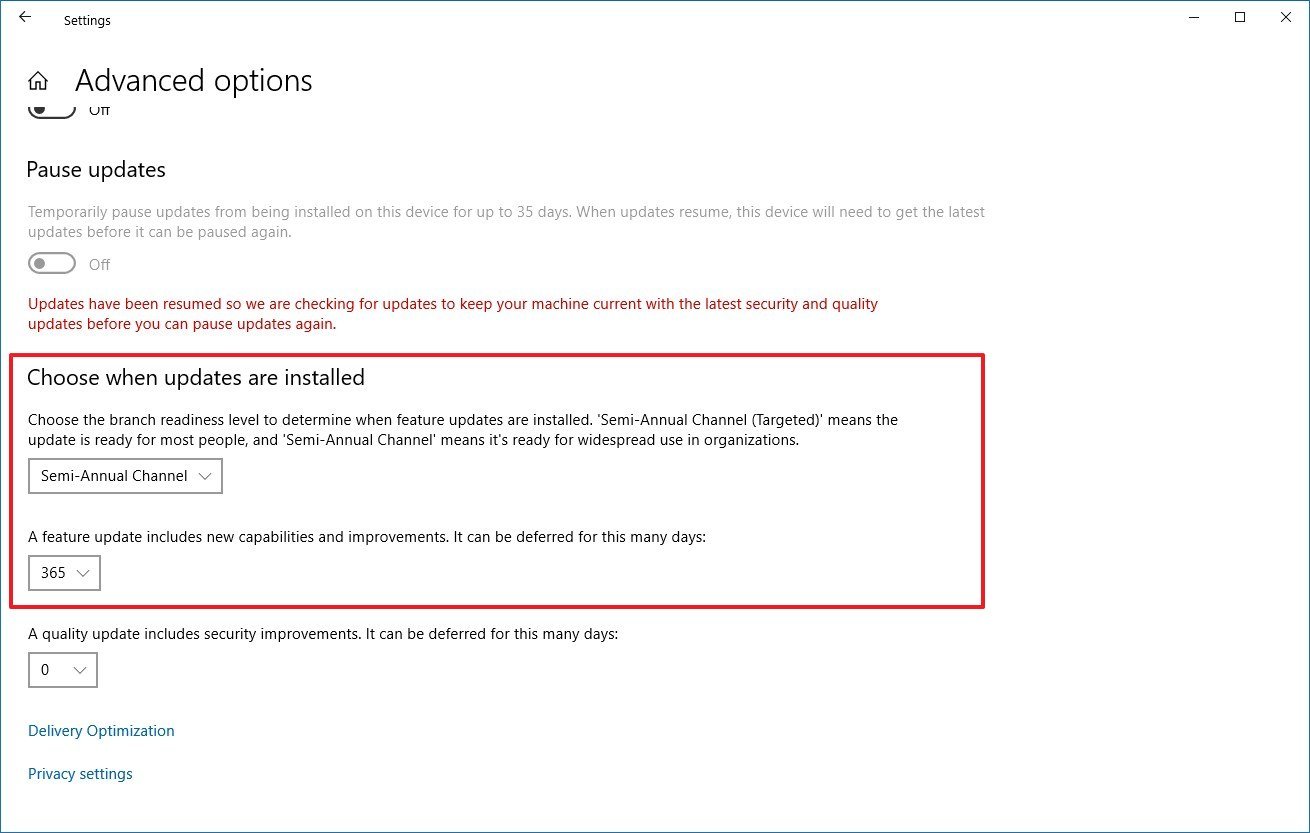
- Use the drop-down menu to choose the number of days that you want defer the feature update.
Once you complete these steps, Windows 10 version 1903 won't install until after the day you configured in the settings. However, your device will continue to receive security and maintenance updates to address any issues and security vulnerabilities for as long as the version that you're using is supported.
How to block the Windows 10 May 2019 Update
The Home edition of Windows 10 doesn't include the same option as Windows 10 Pro to defer new versions. However, if you're running Windows 10 Home, you can still block the May 2019 Update from installing automatically using a metered connection.
A metered connection allows you to minimize the data usage of Windows 10 on capped internet connections. However, because this feature also prevents updates from downloading automatically, you can use it to temporarily block the May 2019 Update from downloading until you remove the settings.
To set a Wi-Fi or Ethernet connection as metered to block a feature update, use these steps:
- Open Settings.
- Click on Network & Internet.
- Click on Wi-Fi or Ethernet (depending on your connection).
- Select the network connection connected to the internet.
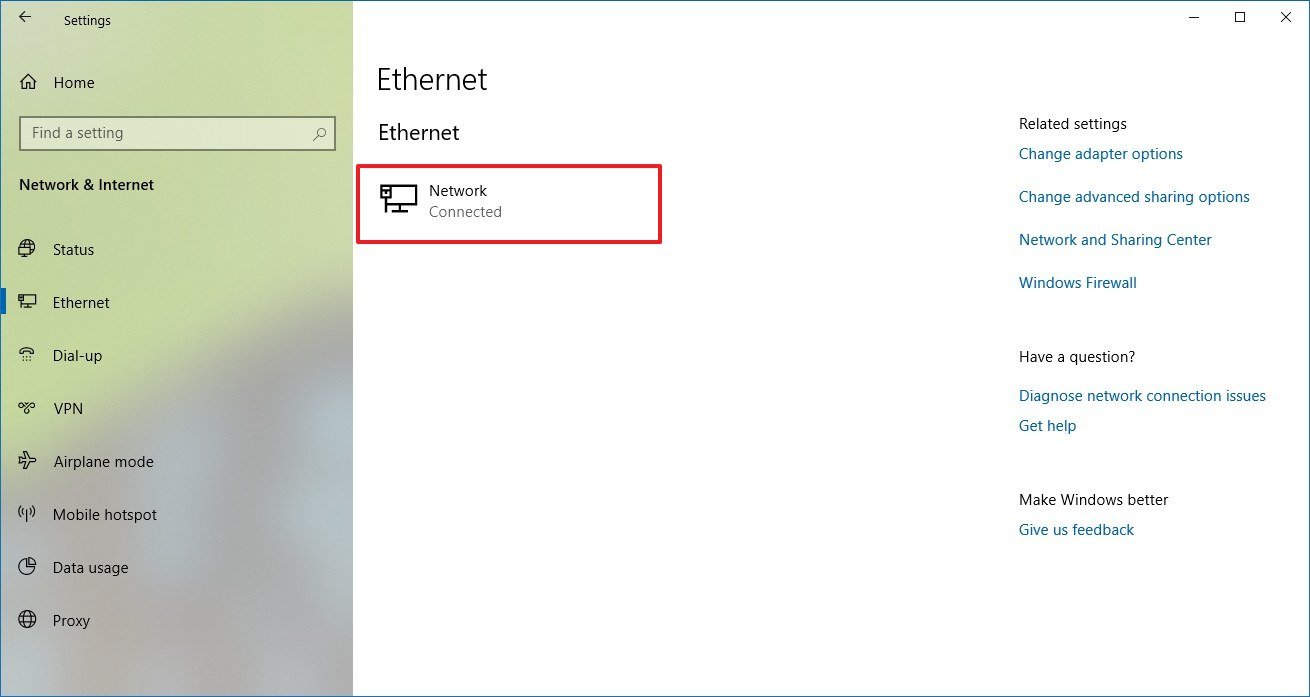
- Turn on the Metered connection toggle switch.
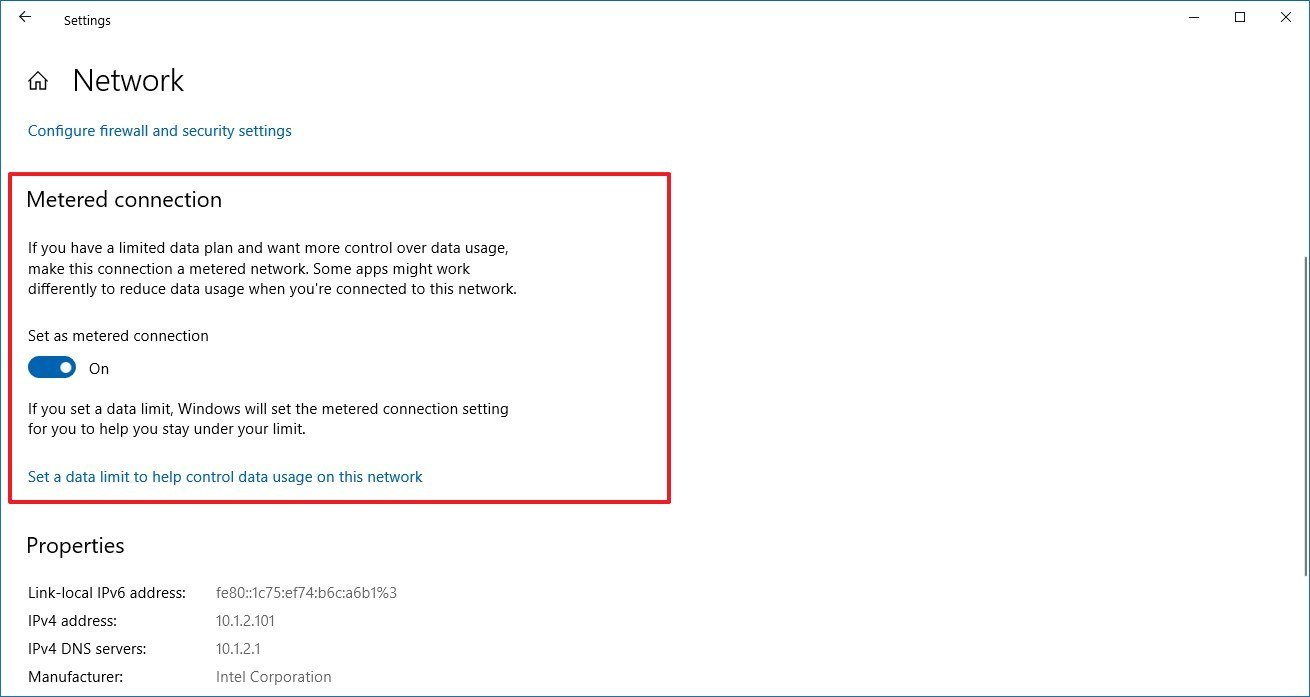
- Click the back button in the top-left corner.
- Click the Home button.
- Click on Update & Security.
- Click on Windows Update.
- Click the Advanced options link.

- Under the "Update options" section, make sure to turn off the Automatically download updates, even over metered data connections toggle switch.
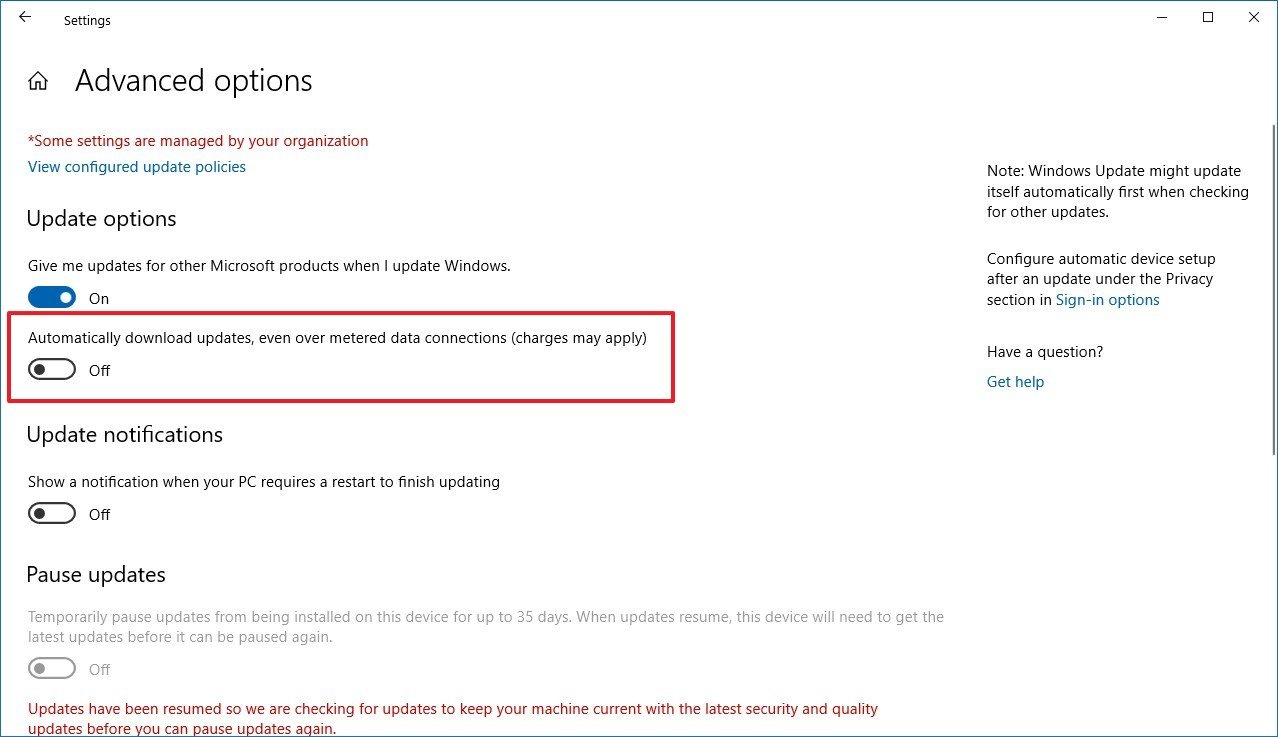
After completing the steps, the May 2019 Update, as well as quality updates, will be blocked on your computer until you revert the changes. However, if you're running a supported version of Windows 10, you'll continue to receive critical updates regardless of the settings.
These instructions apply to a specific network connection. They don't apply to a network adapter. This means that if you connect your computer to a different network, you must also set that connection as metered. Otherwise, Windows Update will ignore the settings and try to download the feature update.
Also, using this method will block live tiles from showing updates in the Start menu, Microsoft Store apps may stop receiving updates, and files may stop syncing automatically to services like OneDrive.
While it's never a good idea to skip updates, as they are important to safeguard your device and files, this is still one of the best alternatives to block version 1903 on Windows 10 Home — or if the version that you're running is getting close to its end of service.
If you're concerned about updates, the Microsoft support site offers up-to-date information about monthly updates for Windows 10. If you learn about a new quality update, you can use this guide to download and install it manually.
Whenever you're ready to remove a metered connection, you can use the same instructions, but on step No. 5, make sure to turn "off" the Metered connection toggle switch.
Wrapping things up
Although the delivery process to upgrade is changing with the Windows 10 May 2019 Update, the new change only applies to devices running newer releases. If you're using an older version close to its end of service, Windows Update will try to download and install the new feature update automatically as usual.
The instructions outlined in this guide will help you prevent the feature update from installing automatically on your desktop, laptop, or tablet, no matter the situation.
However, this guide isn't meant to imply that you should skip the new version. Updates are critical to keeping your device and data safe and secure from malware, hackers, and other threats. They are also essential to access new features and changes to improve the overall experience and make you more productive, but it's also a known fact that during the initial rollout phase, unknown bugs, problems, and isolated incidents are expected. It happened in the past, and it'll happen in the future.
If you're concern about the security of your device, consider that with the new update control changes you'll still be able to click the Check for updates buttons in the Windows Update settings page without triggering an upgrade.
Also, every new version of Windows 10 is supported for at least 18 months, and while running a supported version, the device will continue to receive quality updates to patch security vulnerabilities, fix issues, and improve performance.
Mauro Huculak has been a Windows How-To Expert contributor for WindowsCentral.com for nearly a decade and has over 15 years of experience writing comprehensive guides. He also has an IT background and has achieved different professional certifications from Microsoft, Cisco, VMware, and CompTIA. He has been recognized as a Microsoft MVP for many years.

